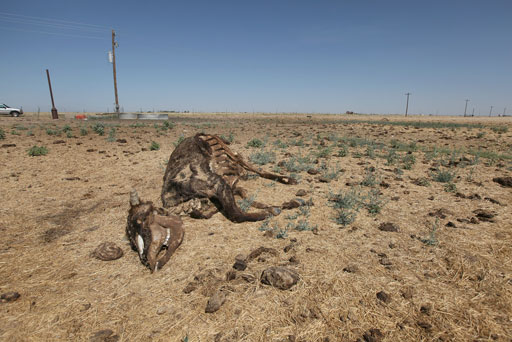14.1.1 Drought
A drought occurs when there is a deficiency in precipitation over an extended period of time, resulting in a water shortage. You are probably familiar with the consequences of a drought. The lack of rain means that the water flow in rivers is reduced, lakes and pools shrink in size or may dry up, groundwater and soil moisture are depleted, and crops are damaged. Prolonged drought can lead to a major national and regional food insecurity crisis. Domestic animals might also die (Figure 14.1).

Ethiopia has been associated with drought for a long time and many people have suffered from its effects. For example, in the drought of 1985 in the northern part of the country, an estimated 800,000 people died due to malnutrition and disease.
During a shortage of fresh water during a drought, people may be forced to use unprotected water supplies. Furthermore, people and animals may use the same water source, which increases the risk of contamination of that particular water source. This leads to increased exposure to waterborne diseases (such as diarrhoea and dysentery) and water-washed diseases (such as trachoma).
14.1 Causes of emergency situations
